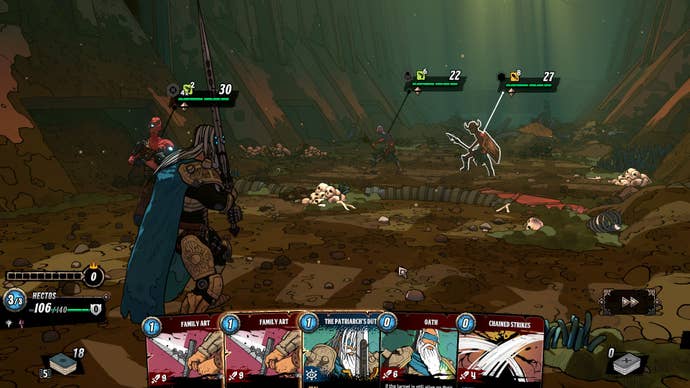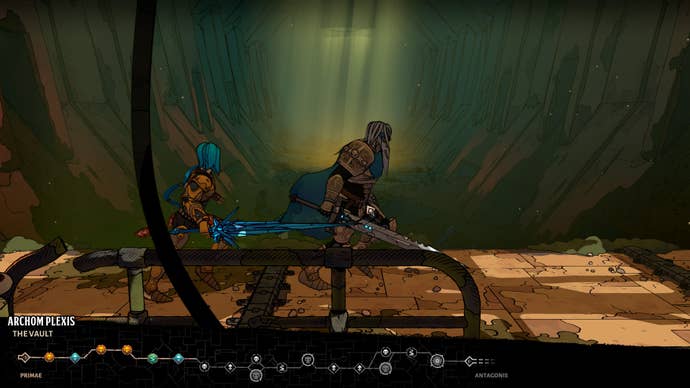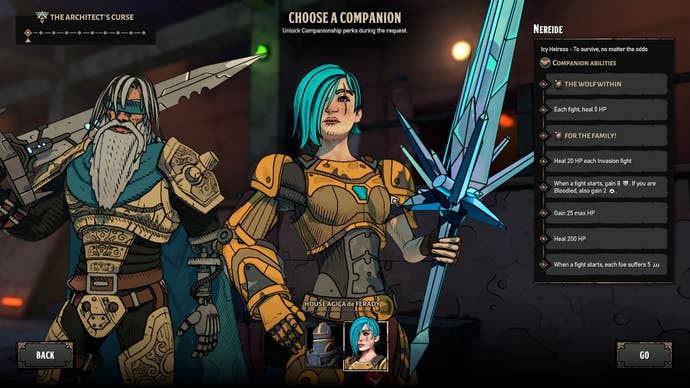Slay the Spirelooms large over the Roguelike deckbuilding genre.
Beneath Oresa copies it.
Take all the Slay the Spire parts away and you don’t really have a game.

And I find that exciting.
And Beneath Oresa is why.
Beneath Oresa
The first thing is that Beneath Oresa is big, in terms of file size.

It’s 4GB, a relative whopper.
They’re usually measured in megabytes.
What this means is that Beneath Oresa has graphics (no offence, Slay the Spire).

This extends to the sequences between battles too.
These, you usually don’t see.
You just move along a map and deal with whatever the things are you arrive at.

You don’t deal with the in-betweens.
But here, they’re shown.
They are all very nice touches.

Characters, plural, by the way.
Another major difference in Beneath Oresa is that you choosetwocharacters at the beginning for your run, not one.
But you only fight as one of them.

Companionship is a separate progression path started afresh each run.
Another big thing: stages are broken into two fighting spaces, near and far.
Having two spaces means there’s an opportunity to layer positional abilities in.

It’s a whole other side of the game to think about.
These can be really important.
Then, you deliver a counter-attack.
And again, these can be some of the strongest attacks in the game.
Both, then, depend on what cards you’ve been playing.
This is a key part of your strategy.
Those are the obvious things, and with them alone, Beneath Oresa feels sufficiently different.
But there are less obvious things I really like too.
It’s a kind of turn-based horde mode, and it’s exciting.
I like what Oresa does with card and deck upgrading and pruning, too.
But here, the deckbuilding stops on your route condense many more options into one.
Or would you like to increase your Companionship by oneandremove a cardanddo something else?
And I love this.
Decisions feel much more valuable and chunky as a result.
To me, it’s an improvement.
But that doesn’t mean it can’t be altered, can’t be evolved.
Don’t be fooled: this game is hard.
And remember, it’s still early-ish days.
Not that it feels lacking in the few hours I’ve spent with it.
I think It’s clear already that Beneath Oresa is one to keep an eye on.